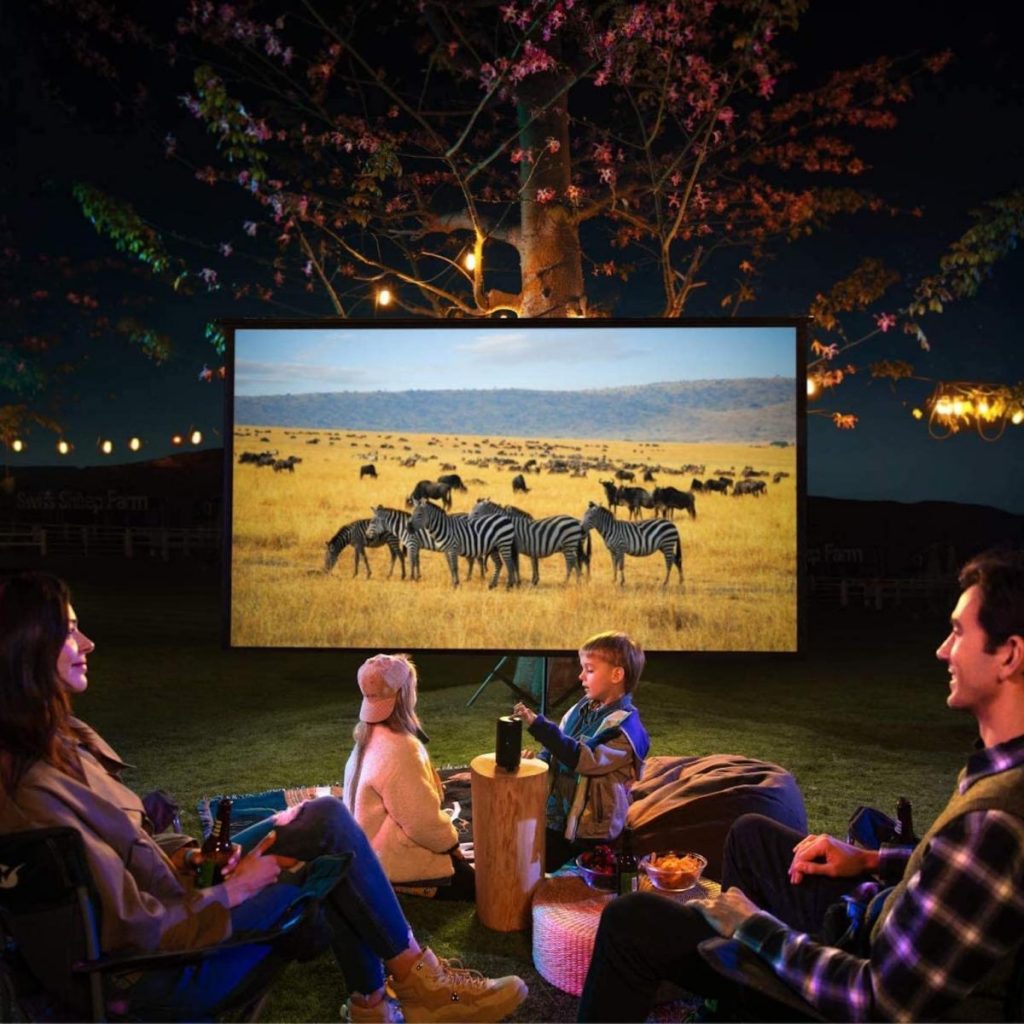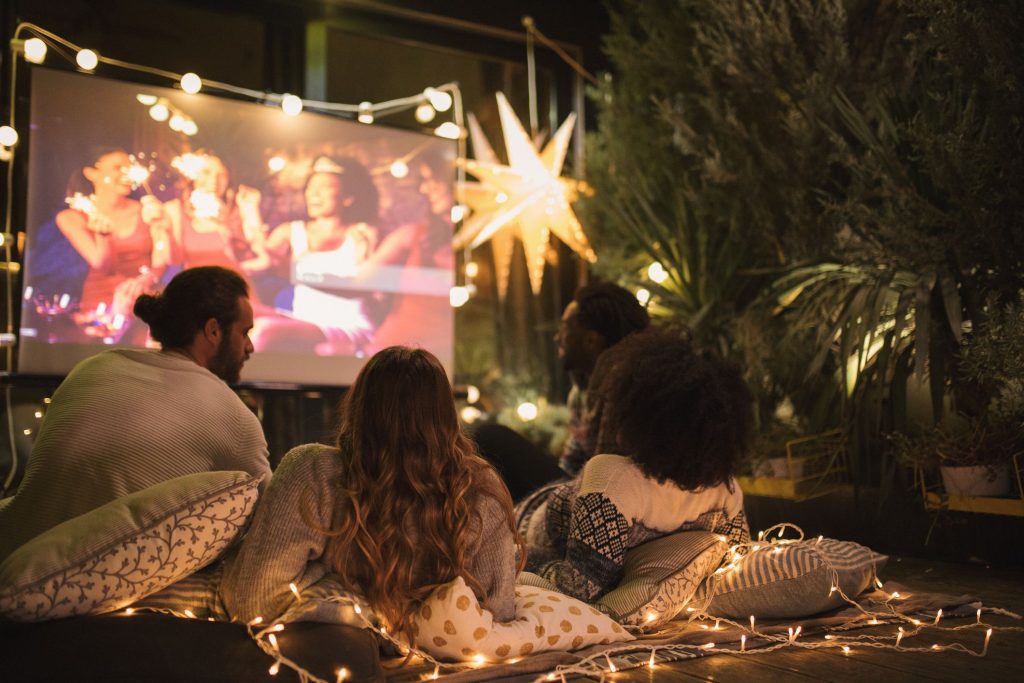The lumen is the most significant feature of projectors. If you intend to use a huge screen in your home theater, you must understand the term lumens and how many lumens for outdoor projector you need.
The brightness of your projector’s light is measured in lumens. If the lumen rating is high enough, your picture quality will be outstanding even at dusk. Images will appear blurry due to low lumen quality, which can cause eye strain.
There are numerous outdoor projectors available, each with a different brightness output. Seven thousand lumen projectors, 4000-lumen projectors, 5000-lumen projectors, and 6000-lumen projectors are just a handful of today’s eye-catching versions. The lumen output of a projector is described using the term lumen.
This article will go over how many lumens for outdoor projector should have in great detail. It is now up to you to carefully read through it and choose the best choice for you.

What Is a Lumen?
A lumen is a unit of measurement for the amount of light emitted by a source for a predetermined time.
A beam of light’s luminosity is measured regarding its visibility to the human eye. Because of this, it is the best way to gauge how much light you can see on the projection screen.
An ANSI standard labels most projectors with the amount of light they can emit. As a result, the ANSI lumens rating is quick and easy to assess a projector’s capabilities.
How Many Lumens For Outdoor Projector
Many variables can affect how many lumens an outdoor projector needs. Two thousand lumens can be used at night, but daytime use requires at least 5000 luminosity (or lumens). The following factors determine a projector’s lumen output:
Ambient light
When shopping for an outdoor projector, consider the level of light in the surrounding area. A daylight projector must be extremely bright to produce crystal-clear projections on a screen.
Outdoor projectors with a 5500-lumen output should be able to illuminate your screen for several hours before sunset. While a 12000-lumen projector is ideal, an LCD screen may be more cost-effective if you can only afford that.
Screen size
If the screen is larger, you will need more lumens. Three thousand lumens is the ideal brightness level for a 100″ to 120″ screen in bright ambient lighting.
However, you’ll want at least 5000 lumens to feel safe and secure in the daylight because an outdoor projector with a brightness of 3000 lumens isn’t all that impressive.
Contrast ratio
Images are judged by contrast, which is the ratio of dark to light pixels. Contrast and ambient light determine how sharp and vivid movies and video content appear.
Details are brought into sharp relief by contrast, which raises the overall quality of the image. When working with a high-quality medium, a higher contrast ratio is recommended.
Having a contrast of 3000:1 means that your lightest and whitest areas are 3000 times brighter than the deepest and darkest areas of your image.
Generally speaking, you’ll need a higher contrast in an area that is dim but not dark. Please consider that any amount of light in the area will degrade contrast, regardless of its high.
Screen gain
Projector screens can only reflect so much light at once, called gain. In general, the more screen gain there is, the more light there is.
For instance, it will appear that your 1.5 gain screen reflects 1500 lumens. That’s why you’ll need less light if your screen is brighter.
Related: How Many Lumens Is Good for Projector

Outdoor Projector Screen Qualities to Consider
Stability
When you have your outdoor projector screen setup, leave it there until you need it. As a result, maintaining a level of stability is critical. Huge and lightweight cinema screens for outdoor use are the norm these days.
Since they’re so light, the wind can easily lift them like a sail, making them easy to topple. The more surface area a screen has to catch the wind, the greater the likelihood it will topple over.
Make sure you have pegs, stakes, and ropes to secure the screen to the ground if you’re using a large outdoor movie screen. Add more weight to the screen and place it as far away from the wind as possible.
Tensioning
For outdoor movie screens, getting a properly tensioned projector screen is critical. Tensioned projector surfaces are necessary to avoid seeing wrinkles and fold lines on the surface of the projected image.
Not only that, but every little gust of wind will cause the surface to ripple, robbing you of the immersive experience of watching a movie on an outdoor projector screen that has been tensioned.
Projector screen size
If you have a large outdoor area, a 20-foot inflatable screen would be ideal. In addition, you would require a very bright projector. Calculate the maximum screen size that will fit your backyard by taking measurements.
You’ll also want to look at the viewer’s approximate location. You should sit 10 inches away from the screen for every 12 inches of screen width. If you know where you’re going to sit and how much space your screen has, you can figure out what size projector screen you’ll need for outdoor use.
Are 7000 Lumens Good for a Projector?
When used in a very bright environment, some projectors can handle up to 7000 lumens without any issues. The projector is ideal for a daytime outdoor party because the light won’t affect it.
Seven thousand lumens is an incredible light output for an outdoor daylight projector and an auditorium projector. The projector can be overwhelming when used in a typical home theater, darkroom, or classroom.
Can a Projector Be Used in Daylight?
Yes. It is possible to use a projector in daylight if it has good features for maintaining light. The higher the lumen count of a projector, the better it works in a room with ambient light.
Most of them are suitable for outdoor projectors with brightness outputs surpassing 3000 lumens, depending on the projector. Other features, such as resolution, also contribute to its effectiveness.
Read more: How to Measure Lumens
Conclusion
It will help if you know how many lumens for an outdoor projector are needed to have a high-quality projector to watch movies, games, television, and other content outside.
Brighter is almost always preferable for daytime viewing, but it is not always necessary. Even if your content type, screen size, screen gain, and ambient lighting conditions aren’t ideal, an outdoor projector with fewer lumens can still be enjoyable.
